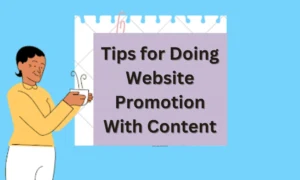In the fast-paced world of e-commerce, having a visually appealing website and a great product catalog is just the beginning. To truly succeed, you need to ensure that your target audience can find your online store amidst the vast digital landscape. This is where Search Engine Optimization (SEO) comes into play. In this article, we will delve into effective SEO strategies tailored specifically for e-commerce websites, helping you increase visibility, drive organic traffic, and ultimately boost sales.
Keyword Research and Optimization
One of the fundamental aspects of SEO for e-commerce websites is comprehensive keyword research. Identify high-value, relevant keywords that your potential customers are likely to use when searching for products you offer. Utilize tools like Google Keyword Planner, SEMrush, or Ahrefs to find these keywords. Once identified, strategically incorporate them into your product descriptions, category pages, and blog content.
Unique Product Descriptions
Avoid using manufacturer-provided product descriptions that are duplicated across multiple websites. Create unique, engaging product descriptions that not only help with SEO but also provide value to your customers. Include relevant keywords naturally and focus on showcasing the benefits and features of your products.
Optimize Product Images
High-quality images are crucial for e-commerce websites. Optimize your product images by compressing them without compromising quality. Use descriptive file names and alt tags for each image, incorporating relevant keywords where appropriate. This not only improves your site’s SEO but also enhances user experience, especially for visually impaired visitors.
Mobile-Friendly Design
Given the prevalence of mobile devices, having a mobile-friendly website is imperative. Google prioritizes mobile-responsive websites in search rankings. Ensure that your e-commerce site is fully optimized for mobile users, providing a seamless shopping experience across all devices.
Site Speed and Performance
Page loading speed significantly impacts user experience and SEO. Slow-loading pages can lead to high bounce rates and lower search engine rankings. Use tools like Google PageSpeed Insights to identify and rectify performance bottlenecks, such as image optimization, minification of CSS and JavaScript, and reliable hosting services.
User-Generated Content and Reviews
Encourage customers to leave reviews and ratings for your products. User-generated content not only builds trust with potential buyers but also adds fresh and relevant content to your site. Respond to reviews, engage with your customers, and address any concerns promptly.
Schema Markup for Rich Snippets
Implement schema markup to enhance your product listings in search results. Rich snippets can display additional information such as product prices, ratings, and availability directly in the search results, making your listings more clickable and informative.
Content Marketing and Blogging
Regularly publishing informative and relevant blog content can attract organic traffic and establish your e-commerce site as an authority in your niche. Create blog posts that address common customer questions, industry trends, and product guides, incorporating keywords naturally.
Internal Linking
Internal linking helps search engines understand the structure and hierarchy of your e-commerce website. Link related product pages, categories, and blog posts together, making it easier for users and search engines to navigate your site.
Monitoring and Analytics
Finally, continuously monitor your SEO efforts using tools like Google Analytics and Google Search Console. Track your website’s performance, keyword rankings, and user behavior. Use these insights to refine your SEO strategies and stay ahead of the competition.
Conclusion
In conclusion, effective SEO strategies for e-commerce websites are paramount in today’s digital landscape. Leveraging these techniques can significantly enhance the online visibility and competitiveness of your online store. By optimizing product listings, enhancing site speed, and conducting thorough keyword research, you can better position your e-commerce site for success in search engine rankings. To stay ahead in this dynamic field, it’s essential to keep up with the latest trends and continually refine your SEO approach. For more in-depth insights and expert guidance on SEO for e-commerce, visit Blaberize.com – your ultimate resource for staying at the forefront of digital marketing strategies.




























